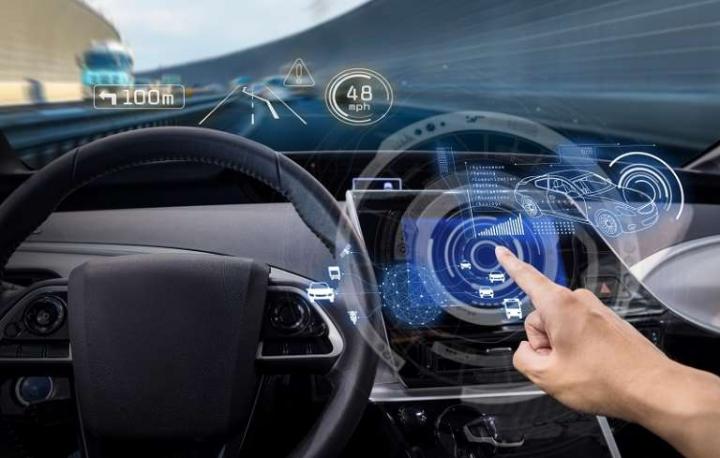AR-HUD: A Heads Up On the Road Ahead
Autonomous driving is set to drastically change our roads and the way we interact with cars. But while fully autonomous driving is still some way off due to a mixture of technology- and policy-related factors, we will continue to be the ones behind the wheel.
In the meantime, there is still plenty of space for the development of new features that assist drivers — while letting them remain in control — using the most advanced technologies. One such feature that has been making great strides of late is Augmented Reality Head-Up Display (AR-HUD).

From Fighter Jet to Your Car
HUDs used to be most closely associated with fighter jets, placing crucial information such as speed and altitude directly in front of pilots so that they can keep their “head up” without needing to divert their gaze to various gauges. By applying AR to HUDs, AR-HUD takes things a step further to create a far superior experience. Unlike traditional HUDs, AR-HUD projects virtual images into the driver’s field of view (FOV), enabling the driver to remain focused on the road ahead.
Eyes on the Road
The biggest benefit of AR-HUD is safety. Even the briefest glance away from the road can result in lost concentration and potentially an accident. By placing all the information you need while driving in the driver’s FOV, AR-HUD ensures you can keep your eyes on the road at all times.
And, because this information is overlaid on top of the physical road, you don’t need to convert information provided by a mobile or built-in screen to the actual road. For example, a complex intersection might involve multiple right turns. By overlaying the instructions onto the road itself, AR-HUD enables you to instantly see which turn to take.
Huawei AR-HUD
At the 2021 International Motor Show Germany (IAA MOBILITY 2021), Huawei unveiled its very own AR-HUD solution. Its 10 L compact design means it can be installed in a variety of vehicle types, while its unique optical path design and algorithm technologies improve definition and eliminate dizziness caused by ghosting.

Some of the major features and their benefits include:
- AR navigation: AR arrows are projected onto the road ahead, offering precise navigation so that you never miss a turn.
- Ultra-wide 13° x 5° FOV: A 70-inch virtual image is displayed 7.5 m in front of your driving position.
- Marked lane violation warning: You will be notified about potential lane-related traffic violations.
- Pedestrian warning: Safe assisted driving warns you when pedestrians cross the road.
- Front vehicle distance warning: The display reminds you not to get too close to the car in front.
- Lane changing guidance: Lane-level guidance ensures you’re in the right lane at the right time.
- Enhanced rain-fog display: Surrounding vehicles are accurately marked during poor driving conditions, helping you and others get home safe.
Future of AR-HUD
While we continue to drive our cars manually, the above features that assist driving are critical. But as driving eventually becomes fully (or as close as possible to) autonomous, what does the future hold for AR-HUD? Once the car is largely in control, will the driver need so many warnings and guidance?
Huawei predicts that autonomous cars will become the “mobile third space“, where we’ll be able to enjoy all kinds of leisure and entertainment activities as we’ll no longer need to focus our attention on the act of driving. This looks like an area where AR-HUD can make its mark.

Huawei’s AR-HUD solution is already making headway here, offering a range of entertainment features for use when the car is parked. For example, the AR-HUD delivers an in-vehicle cinema-like experience utilizing the entire 70-inch virtual display, and enables clear, true-to-life video calls so you can keep in touch with your loved ones. These entertainment features can be enjoyed from the driver’s seat when parked, or from the front passenger seat anytime.
Indeed, we are just seeing the tip of the iceberg when it comes to the possibilities of AR-HUD. It’s an exciting space, and one that’s limited only by our imaginations.
Where do you see AR-HUD coming into full play? Feel free to comment below.
Download the report Intelligent Intelligent Automotive Solution 2030 for predictions on how the automotive industry will shape up over the next decade.

Read More
- Intelligent World 2030: In the Fast Lane to the Future
- Hello Autonomous Driving, Goodbye Traffic Lights?
Disclaimer: Any views and/or opinions expressed in this post by individual authors or contributors are their personal views and/or opinions and do not necessarily reflect the views and/or opinions of Huawei Technologies.
Leave a Comment